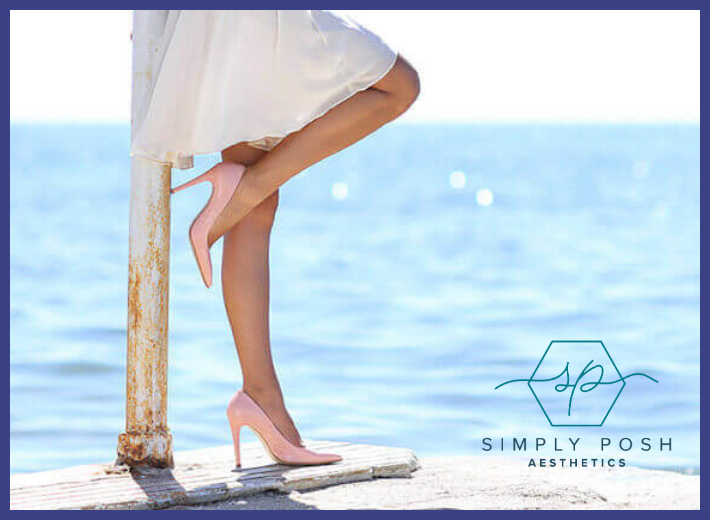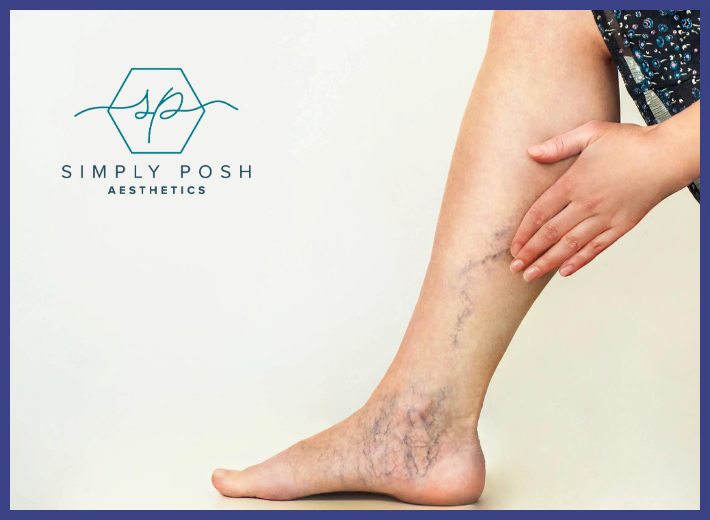Say Goodbye to Varicose Veins
Varicose veins are a common condition affecting many individuals, especially women. They are unsightly and can cause pain, discomfort, and other complications. Fortunately, there are various diagnoses and treatment options available to manage this condition. Read more to understand your options and make an informed decision about your care. Remember -- we are here to help you and have options to combat varicose veins -- so come and see us for a consultation and get your questions answered!
Diagnosis
Your health care provider will do a physical exam, including looking at your legs while you're standing to check for swelling. Your provider might also ask you to describe pain and aching in your legs.
Tests
To diagnose varicose veins, a health care provider might recommend a test called a venous Doppler ultrasound of the leg. A Doppler ultrasound is a noninvasive test that uses sound waves to look at blood flow through the valves in the veins. A leg ultrasound can help detect a blood clot.
In this test, a health care provider moves a small hand-held device (transducer), which is about the size of a bar of soap, against the skin over the body area being examined. The transducer transmits images of the veins in the legs to a monitor, which displays the results.
Treatment
Treatment for varicose veins may include self-care measures, compression stockings, and surgeries or procedures. Procedures to treat varicose veins are often done as an outpatient procedure, which means you usually go home on the same day.
Ask your insurer if varicose vein treatment is a covered expense. If varicose vein treatment is done only to improve the appearance of the legs (cosmetic reason), the cost might not be covered by insurance.
Self-care
Treatment for varicose veins may include self-care measures, compression stockings, and surgeries or procedures. Procedures to treat varicose veins are often done as an outpatient procedure, which means you usually go home on the same day.
Ask your insurer if varicose vein treatment is a covered expense. If varicose vein treatment is done only to improve the appearance of the legs (cosmetic reason), the cost might not be covered by insurance.
Compression stockings
Wearing compression stockings all day is often the first approach to try. The stockings squeeze the legs, helping veins and leg muscles move blood more efficiently. The amount of compression varies by type and brand.
Compression stockings are available at most pharmacies and medical supply stores. Prescription-strength stockings also are available and may be covered by insurance if varicose veins are causing symptoms.
Surgeries or other procedures
If self-care steps and compression stockings don't work, or varicose veins are more severe, a health care provider might recommend surgery or other procedures:
Sclerotherapy. A health care provider injects the varicose veins with a solution or foam that scars and closes those veins. In a few weeks, treated varicose veins should fade.
The same vein might need to be injected more than once. Sclerotherapy doesn't require anesthesia and can be done in a health care provider's office.
Laser treatment. Laser treatment sends strong bursts of light onto the vein, which makes the vein slowly fade and disappear. No cuts or needles are used.
Catheter-based procedures using radiofrequency or laser energy. This procedure is the preferred treatment for larger varicose veins. A health care provider inserts a thin tube (catheter) into an enlarged vein and heats the tip of the catheter using either radiofrequency or laser energy. As the catheter is removed, the heat destroys the vein by causing it to collapse and seal shut.
High ligation and vein stripping. This procedure involves tying off a vein before it joins a deep vein and removing the vein through small cuts. This is an outpatient procedure for most people. Removing the vein won't keep blood from flowing in the leg because veins deeper in the leg take care of the larger volumes of blood.
Ambulatory phlebectomy (fluh-BEK-tuh-me). A health care provider removes smaller varicose veins through a series of tiny skin punctures. Only the parts of the leg that are being pricked are numbed in this outpatient procedure. Scarring is generally minimal.
Lifestyle and home remedies
Lifestyle and home remedies for varicose veins include:
Exercise. Get moving. Walking is a great way to encourage blood flow in the legs. Your health care provider can recommend an appropriate activity level for you.
Manage weight. Shedding excess pounds takes unnecessary pressure off the veins.
Avoid salt. Follow a low-salt diet to prevent swelling caused from water retention.
Choose proper footwear. Avoid high heels. Low-heeled shoes work calf muscles more, which is better for your veins.
Avoid tight clothing. Don't wear tight clothes around your waist, legs or groin because these garments can reduce blood flow.
Raise the legs. To improve the blood flow in the legs, take several short breaks daily to raise the legs above the level of the heart. For example, lie down with the legs resting on three or four pillows.
Avoid long periods of sitting or standing. Change your position frequently to encourage blood flow.
Alternative medicine
Though they haven't been well studied, a number of alternative therapies claim to be helpful treatments for chronic venous insufficiency. This is a condition associated with varicose veins in which leg veins have problems returning blood to the heart. Alternative therapies for varicose veins may include:
Horse chestnut
Butcher's broom
Grape (leaves, sap, seed and fruit)
Sweet clover
Talk with your health care provider before trying any herb or dietary supplement to make sure the product is safe and won't interfere with medications you take.
Preparing for your appointment
Your health care provider will need to look at your bare legs and feet to diagnose varicose veins and figure out what treatment might be best for your condition.
Your primary care doctor might recommend that you see a doctor who specializes in vein conditions (phlebologist), a vascular surgeon or a doctor who treats skin conditions (dermatologist or dermatology surgeon). In the meantime, there are some steps you can take to prepare for your appointment.
What you can do
Make a list of:
Your symptoms, including any that may seem unrelated to varicose veins, and when they began
Key personal information, including a family history of varicose veins or spider veins
All medications, vitamins or supplements you take, including doses
Questions to ask your doctor
Some basic questions to ask your doctor include:
What's the most likely cause of my symptoms?
Are there other possible causes for my varicose veins?
What tests will I need?
What treatment do you recommend for me?
How can I best manage varicose veins along with other health conditions I have?
Do I need to restrict any activities?
Are there any brochures or other printed materials I can have? What websites do you recommend?
What to expect from your doctor
Your doctor is likely to ask you a number of questions, including:
When did you notice the varicose veins?
Do you have pain? If so, how severe is it?
What, if anything, seems to improve your symptoms?
Does anything appear to worsen your symptoms?
What you can do in the meantime
Even before your appointment, you can begin self-care.
Try not to stand or sit in one position for a long time.
Raise your legs when you're seated.
Avoid uncomfortable footwear and tight socks or hosiery.
https://www.mayoclinic.org/diseases-conditions/varicose-veins/diagnosis-treatment/drc-20350649
We understand how varicose veins can impact your daily life. Contact us to discuss your options for diagnosis and treatment. Our team of experts is dedicated to helping you rejuvenate, enhance, and protect your body. Call us today at 561-235-2898 or visit our Facebook page for more tips.



